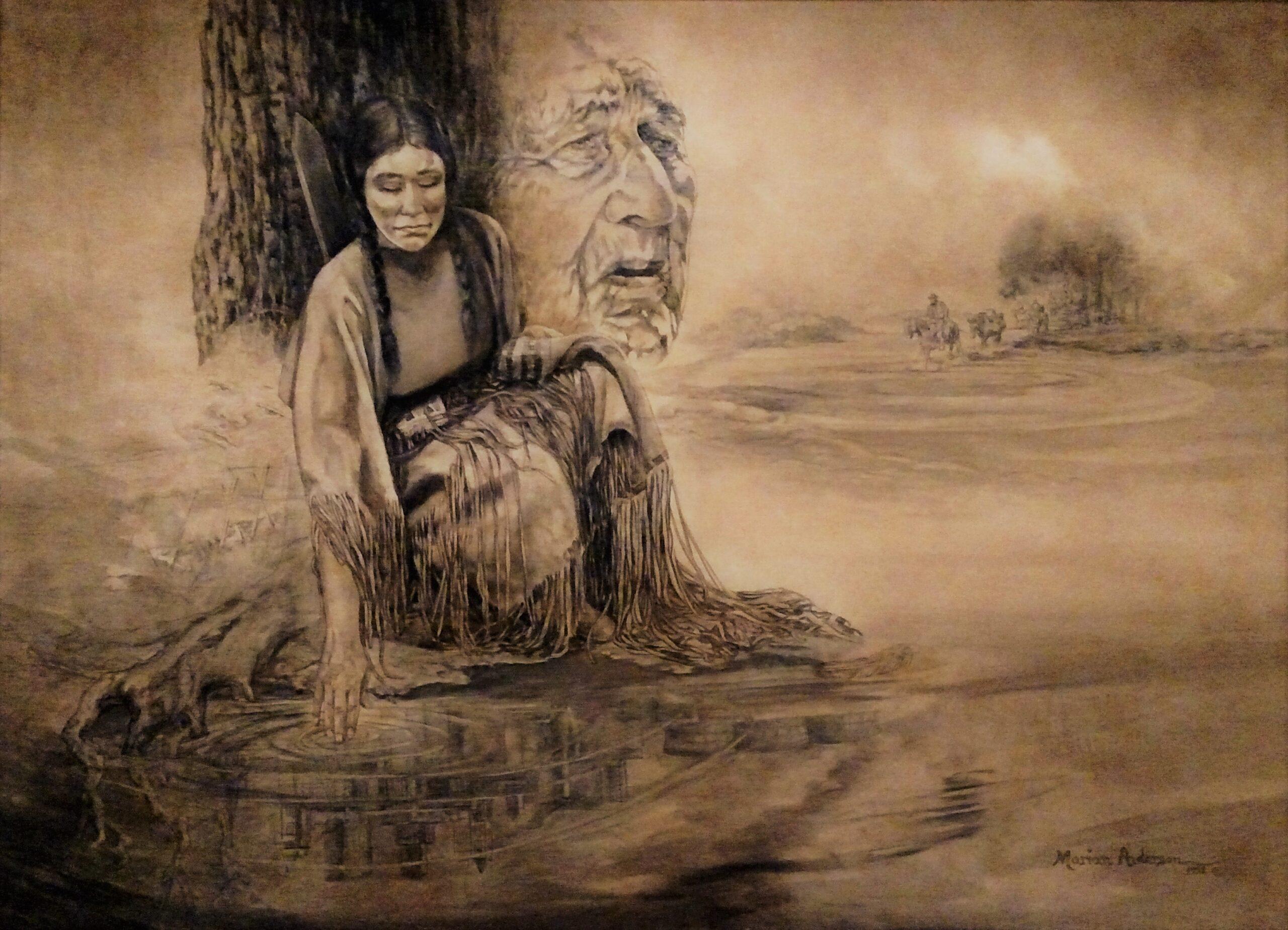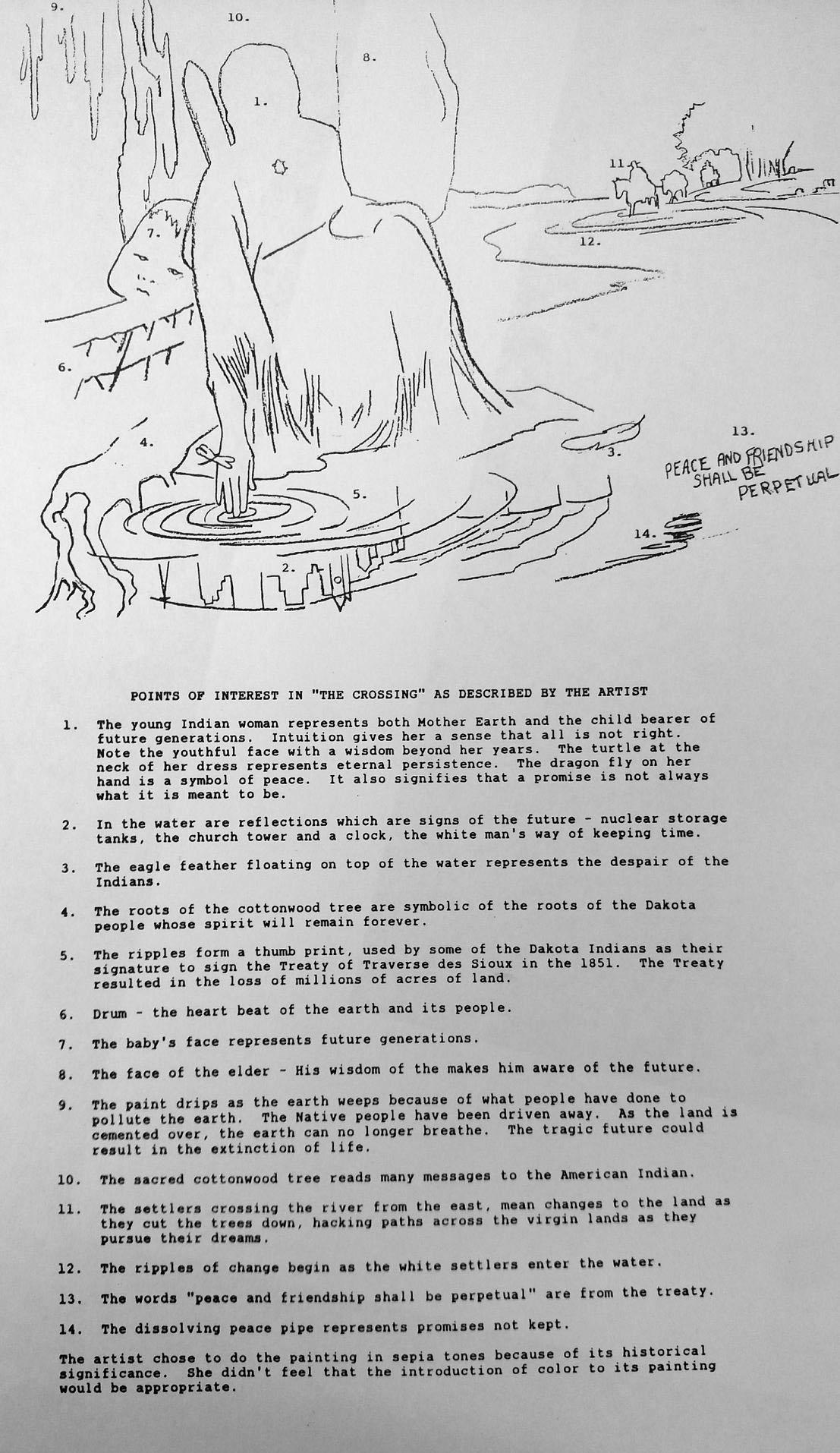Hailed by the artist herself as her most important piece, The Crossing tells a story about the crossing point of two ways of life: Dakota and white. Not only do their paths cross at the river’s edge, but also their futures.
The viewer is invited to look for the symbols Marian styled into the painting to discover life’s interconnectedness through these messages.
The painting’s focal point is a young woman in child-bearing years. She holds a special position in keeping the family together, bringing into this world the next generation. The cradleboard on her back indicates that she has a young child. The leather dress she wears represents her connection with Mother Earth.
As she pauses at the river’s edge she glimpses a vision of the future reflected in the water. Images of skyscrapers and nuclear cooling tanks are revealed. A church symbolizes the imposition of Christianity on the traditional religion of her people; a clock represents a different interpretation of time.
In this clear and unpolluted stream, the artist has indicated a thumbprint in the ripples. Many of the Indians, unable to read or write, used the imprint of their thumb to sign treaties, not fully understanding the impact of the agreement they made with the whites.
An Eagle feather floats on the rippling water, an image of a decision gone wrong, while a peace pipe submerges into the waves. A dragonfly lightly touches the woman’s hand, symbolizing that promises are not always what they seem to be.
From the bark of the cottonwood comes forth the face of an elder, depicting wisdom, sorrow, and concern. The baby’s face intermingles with a drum, representing the heartbeat of the people. The young woman, the baby’s face, and the face of the elder portray the circle of the generations.
In the distance, where the white settlers are approaching from the East, trees have been manually chopped, not blown over by the wind. They represent life cut short, not lived to its fullest. The cottonwood tree is sacred to the Dakota people. The root design enters at the river’s edge. The roots of the tree will always remain, as will the Indian people.
The original painting hangs at the Treaty Site History Center.


